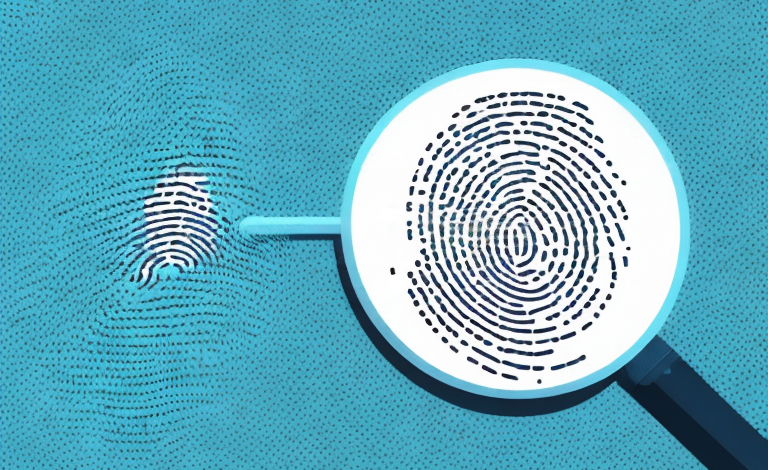Forensic science has come a long way in recent years in order to solve crimes and identify perpetrators. One of the oldest and most reliable techniques for identifying suspects is through fingerprint evidence. But just how accurate is this technique? In this article, we will explore the science behind fingerprint analysis, its history, limitations and future advancements.
The history and development of fingerprint analysis
The first recorded fingerprint-analysis case dates back to the 19th century when Sir William James Herschel began using fingerprints as a means of identification while working for the British East India Company. The use of fingerprints in criminal investigations did not become common until the early 20th century. Throughout the years, various techniques have been developed to identify prints, such as the Henry System, the Vucetich System, and the Automated Fingerprint Identification System (AFIS).
Advancements in technology have greatly improved the accuracy and efficiency of fingerprint analysis. In addition to AFIS, other modern techniques include the use of lasers and digital imaging. Fingerprint analysis is now widely used not only in criminal investigations but also in other fields such as border control, banking, and healthcare. However, concerns have been raised about the potential for errors and biases in fingerprint analysis, leading to ongoing research and development of new techniques to improve its reliability.
The science behind fingerprint identification
The science used in analyzing fingerprints relies on the unique characteristics of the ridges and valleys on the fingertips. A print is made up of specific minutiae, or ridge characteristics, that are unique to each individual. This minutiae includes the ending or bifurcation of ridges, dots and islands formed by the crossing of ridges, ending ridges in a short line, breaks in ridges, and even the direction of the ridges.
One of the most important aspects of fingerprint identification is the ability to match prints to a database of known prints. This is done through a process called automated fingerprint identification, which uses algorithms to compare the minutiae of a print to those in a database. This technology has revolutionized the field of forensics, making it easier and faster to identify suspects and solve crimes.
The reliability of fingerprint evidence in criminal investigations
While no forensic technique is foolproof, fingerprint analysis is considered one of the most reliable methods of identification. The uniqueness of the prints and the strict protocols followed by forensic experts reduce the chances of error. However, like any human endeavor, there is always the potential for human error, bias or misinterpretation, especially when dealing with partial prints or degraded samples.
Despite its reliability, fingerprint evidence has faced criticism in recent years due to concerns about the accuracy of some forensic techniques. In 2018, the National Academy of Sciences released a report highlighting the need for more research and standardization in forensic science, including fingerprint analysis. Additionally, some experts have raised concerns about the potential for false positives and the lack of transparency in the analysis process. Despite these concerns, fingerprint evidence remains a valuable tool in criminal investigations, and advancements in technology and research continue to improve its accuracy and reliability.
Common misconceptions about fingerprint analysis
One common misconception about fingerprint evidence is that it is infallible. This is not the case, although the chance of a false match is very low. Another misconception is that all prints are visible, whether it is left behind by sweat or blood. In reality, sometimes prints may be latent, meaning they are not visible to the naked eye and require specialized techniques, such as dusting or fuming, to make them visible.
Another misconception about fingerprint analysis is that every person has a unique fingerprint. While it is true that fingerprints are unique to each individual, there have been cases where two people have had very similar prints, making it difficult to distinguish between them. Additionally, certain medical conditions or injuries can alter a person’s fingerprints, making them less reliable as a means of identification.
The limitations of fingerprint evidence in court
Although fingerprint evidence has been very helpful in solving crimes, it does have its limitations. For instance, it can indicate that someone was present at a crime scene, but not necessarily as the perpetrator. Additionally, the “expert” status of fingerprint analysts is currently being challenged in some jurisdictions due to criticisms regarding a lack of standardization, as well as allegations of bias and competence issues.
Another limitation of fingerprint evidence is that it may not be useful in cases where the perpetrator wore gloves or intentionally altered their fingerprints. In such cases, other types of evidence, such as DNA or eyewitness testimony, may be more valuable in identifying the perpetrator. It is important for investigators and prosecutors to consider all available evidence and not rely solely on fingerprint evidence in building a case.
How technology has improved the accuracy of fingerprint identification
Modern technology has greatly improved the accuracy of fingerprint identification. The creation of computer databases and the ability to scan and compare prints electronically have decreased the time and increased the accuracy of matching fingerprints to individuals. There are smart algorithms that can analyze even the most complex patterns of minutiae to make a match with an identity in just a few seconds.
In addition, advancements in technology have also allowed for the detection and analysis of latent fingerprints, which are prints that are not visible to the naked eye. This has greatly increased the chances of identifying suspects in criminal investigations, as even the slightest trace of a fingerprint can now be detected and analyzed. Furthermore, the use of 3D printing technology has allowed for the creation of realistic fingerprint replicas, which can be used to test the accuracy of fingerprint scanners and improve their performance.
The role of forensic experts and their training in analyzing fingerprints
Fingerprint analysis is typically done by forensic experts who have received specialized training on how to identify and classify prints. These experts follow strict protocols and guidelines to ensure the accuracy of their findings. However, criticisms of the lack of standardization and consistency across different experts and jurisdictions point to a need for more robust and rigid training programs.
One of the challenges in fingerprint analysis is the potential for human error. Even with proper training and protocols, experts may still make mistakes or misinterpret evidence. This is why many forensic labs have implemented quality control measures, such as peer review and blind testing, to ensure the accuracy and reliability of their analyses.
Advancements in technology have also impacted the field of fingerprint analysis. Automated systems can now assist experts in identifying and matching prints, reducing the potential for human error. However, these systems still require proper training and oversight to ensure their effectiveness and accuracy.
The impact of human error on fingerprint analysis
The potential for human error, bias, or misinterpretation in fingerprint analysis highlights the importance of quality control measures. Some jurisdictions have developed peer review programs where fingerprint experts review each other’s work to ensure accuracy and consistency in findings. Additionally, more investment in research and development of best practices can enable increased accuracy across the field.
However, it is important to note that even with quality control measures in place, human error can still occur. In some cases, fingerprint analysis has been found to be unreliable due to factors such as poor quality prints or the use of outdated techniques. As such, it is crucial for forensic experts to continually update their knowledge and skills to ensure that they are using the most effective methods available.
Controversial cases involving fingerprint evidence
There have been several high-profile cases in which fingerprint evidence played a critical role, such as the Madrid bombing of 2004 where an erroneous fingerprint match was made leading to a wrongful conviction. There is often criticism of law enforcement agencies and their reliance on fingerprint analysis to secure convictions, as they are now asked to provide greater transparency pertaining to their work and methodologies through peer review and other programs.
One of the most controversial cases involving fingerprint evidence is the case of Brandon Mayfield, a Muslim American lawyer who was wrongfully arrested in connection with the Madrid bombing due to a faulty fingerprint match. This case highlighted the potential for human error in fingerprint analysis and the need for greater scrutiny of forensic evidence.
In recent years, there has also been debate over the use of partial fingerprints and the reliability of automated fingerprint identification systems (AFIS). Some experts argue that partial prints can be unreliable and prone to error, while others believe that AFIS technology has greatly improved the accuracy and efficiency of fingerprint analysis.
Future advancements in fingerprint analysis
There is significant ongoing research into fingerprint technology and analysis methods. For example, researchers have looked at using nanotechnology to create highly sensitive, hybrid materials to detect latent fingerprints, transparent sensors and even High-resolution imaging technology platforms that can be used to detect chemical substances, thus helping to reduce human error in fingerprint analysis.
Ethical considerations surrounding the use of fingerprints in criminal investigations
The use of fingerprint evidence raises ethical concerns. When this kind of evidence is used in criminal trials, questions may arise as to whether the accused’s rights to a fair trial have been violated, and whether personal autonomy and privacy have been safeguarded. Policymakers, legal practitioners, and scientists alike are grappling with these ethical questions around the use of biometric data in forensic contexts.
Comparing the accuracy of other biometric identification methods to fingerprints
While fingerprint evidence is highly accurate, other biometric identification methods such as facial recognition and DNA analysis have also gained prominence in recent years. Facial recognition systems use 3D and 2D imaging in real-time to identify a person, while DNA analysis relies on genetic material found at the scene of the crime.
International standards and protocols for the use of fingerprints in criminal investigations
International standards and protocols for the use of fingerprint evidence in criminal investigations vary from country to country. In the United States, the Scientific Working Group on Friction Ridge Analysis, Study and Technology (SWGFAST) has developed best practices and guidelines that experts should follow. Similarly, the European Network of Forensic Science Institutes (ENFSI) has developed guidelines on fingerprint evidence.
Criticisms on the reliability and biasness of Fingerprint Analysis by forensic experts
Despite the potential for bias or mistakes of fingerprint analysis, it remains a popular and useful tool used by many forensic investigators. However, critics have raised concerns that a lack of accountability and transparency has allowed for potential inaccuracies and bias to thrive. Calls for change are becoming louder, as individuals seek fair and impartial methods of justice.
While fingerprint evidence has been utilized in criminal investigations for well over a century, its accuracy and reliability have continued to be questioned by critics. Nevertheless, advancements in technology and training methods have improved the accuracy and consistency of fingerprint analysis. Nevertheless, such developments must be balanced with ethical considerations, personal privacy and autonomy, and the reliability of the forensic experts and their practices.



